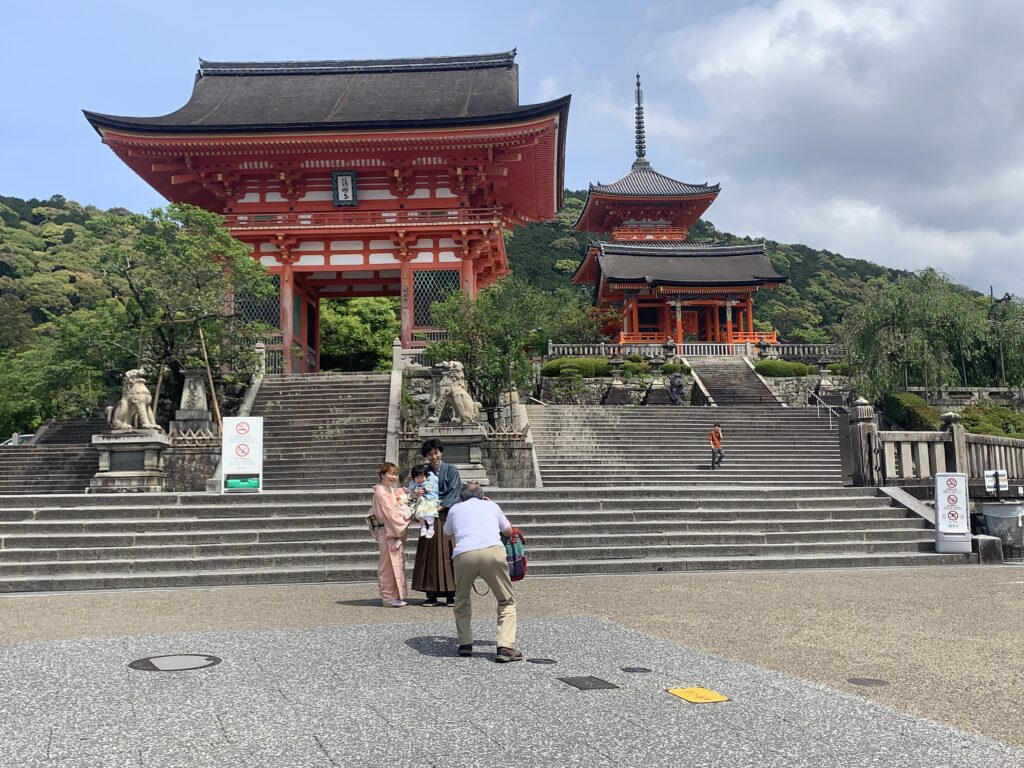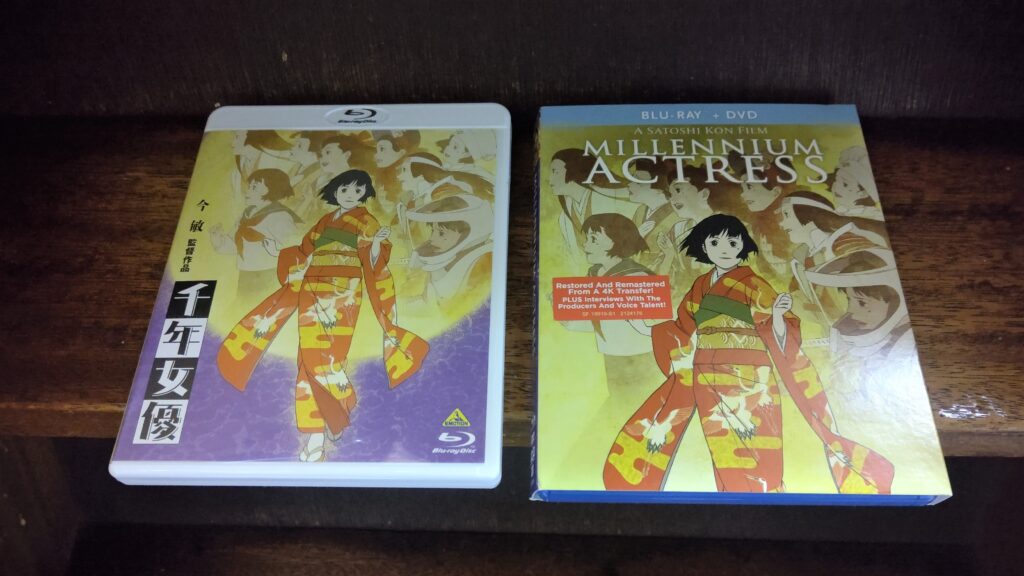Japan has produced a great number of anime film directors, notably Hayao Miyazaki, Isao Takahata, Mamoru Oshii, Katsuhiro Otomo, Hideaki Anno, Mamoru Hosoda and Makoto Shinkai. Besides them, I would like to mention Satoshi Kon and write about him in detail, especially his connection with Kyoto.
Kon was born in Hokkaido in 1963. As a child, he was fascinated with the works of Osamu Tezuka and Leiji Matsumoto. Inspired by Katsuhiro Otomo’s pieces Domu and Akira, he aspired to create his own works, and his career as a manga artist started in the mid-1980s.
He made a foray into the anime industry in Japan in the early 1990s by assisting Otomo with the production of animated science fiction film Rojin Z. After taking part in several productions of animated works, Kon made a debut as an anime film director with the psychological thriller Perfect Blue in 1997. The film drew international attention, earning him awards at Fantasia Festival in Canada and Fantasporto Film Festival in Portugal.
Kon’s director career went on with Millennium Actress (2001), Tokyo Godfathers (2003) and Paprika (2006), each of which came close to winning an Academy Award nomination for Best Animated Feature. He had intended to create another feature film Dreaming Machine, but he died of pancreatic cancer in 2010 when he was only 46 years old.
Kon’s released works are still loved, as he depicted a world in which boundaries between reality and unreality become blurred in such an elaborate way that no one else could follow him.
Kyoto and Satoshi Kon

Speaking of Kyoto and Kon, one of the earliest links was his high school trip. The destinations included Kiyomizu-dera, Kinkaku-ji and Ginkaku-ji, according to his blog post.
The same post also says that he went to Kyoto together with some of the staff engaged in Perfect Blue shortly after a special screening of the film in Osaka. In the drizzling rain, they visited Sanjusangen-do to see scores of Buddhist statues and then traveled to Kiyomizu-dera and Kinkaku-ji. In addition, they enjoyed a good experience just before going back to Tokyo: they were riveted by the building of Kyoto Station, which had been renovated only one year prior to the tour.
Film Millennium Actress
Kyoto certainly helped Kon channel creativity into his next film Millennium Actress, which shared with Hayao Miyazaki’s Spirited Away the Grand Prize in the Japan Agency of Cultural Affairs Media Arts Festival. The outline of Kon’s second work goes as follows:
“When the legendary Ginei Studios shuts down, filmmaker Genya Tachibana and his assistant are tasked with interviewing its reclusive star, Chiyoko Fujiwara, who had retired from the spotlight 30 years prior. As she recounts her career, Genya and his crew are literally pulled into her memories where they witness her chance encounter with a mysterious man on the run from the police. Despite never knowing his name or his face, Chiyoko relentlessly pursues that man in a seamless blend of reality and memory that only Satoshi Kon could deliver.”
To explain the memories of the former actress Chiyoko Fujiwara, Kon realised that he should portray scenes of imaginary films that take place in different periods, including Meiji, Taisho and Showa. When he found it necessary to depict a jidaigeki scene set in the Warring States period, he went to Shochiku Studio in the Uzumasa area and got some hints about the atmosphere of the era.
Millennium Actress is Kon’s only film that depicts Kyoto. Toward the middle of the piece, you can see a street lined with traditional machiya houses nearby and a tall building like Yasaka Pagoda in the distance.* The city becomes a stage for a few of the imaginary jidaigeki films starring Chiyoko Fujiwara. In the first of them, she talks with several other actors in the Kyoto dialect.**
The film in Millennium Actress segues into another, in which Fujiwara acts as a common girl and happens to meet a man she eagerly hopes to see again. He leaves her right away because he is chased by three members of Shinsengumi. Then they threaten Fujiwara to get his whereabouts out of her, but she is narrowly saved by a man looking like Kurama Tengu, a live-action film character played by actor Kanjuro Arashi.
Afterwards, neither reality nor unreality in Millennium Actress shows Kyoto any longer. That said, the movie should be checked out. Many of the imaginary films are likely to look impressive as they were minutely made in homage to various masterpieces, which include Tokyo Story by Yasujiro Ozu, Twenty-Four Eyes by Keisuke Kinoshita and Throne of Blood by Akira Kurosawa.
Kyoto and Satoshi Kon after his death
When Kon died in 2010, not only the media in Japan but those overseas — Los Angeles Times, New York Times and Time magazine — reported the sorrowful occurrence. Many people and fans mourned his early passing. Among them was filmmaker Darren Aronofsky,*** who wrote to Kon’s right hand person Masao Maruyama. Part of Aronofsky’s eulogy goes as follows:
“It is a great loss for world cinema. A true artist has fallen and it saddens my heart.”
(from The Art of Satoshi Kon)
Posthumously, his fame continued to rise. Fantasia International Film Festival renamed its best animation award Satoshi Kon Award in 2012, and the late director also received the Winsor McCay Award at the Annie Award in 2019.
With the year 2020 marking the 10th anniversary of Kon’s death, diverse media paid tribute to him. Just to name a few, writer Matt Schley contributed a feature story on the director to The Japan Times in January, and the August issue of Eureka magazine from Seidosha gave prominence to Kon with more than 30 articles. As a matter of fact, two cinema houses in Kyoto — Demachiza and Kyoto Minami Kaikan — joined the anniversary celebration with a screening event featuring his films and his anime television series Paranoia Agent.
October 12th will mark what would be his 60th birthday. Until now, there has been no news yet about any events, apart from the announcement from Kyoto Minami Kaikan that it will screen, from March 31st to April 6th, Kon’s final work Paprika. It is one of the animated films that became an inspiration for the seven-Oscar-winning film Everything Everywhere All at Once by the two Daniels (Daniel Kwan and Daniel Scheinert). However, it is highly probable that Kon’s ingenious works will be revived at theaters all over Japan, I hope, including those in Kyoto so that his genius can be recognised by wider generations.
*****************
Notes
*Art director Nobutaka Ike recalls that Kyoto was selected because the city could show the audience the most picturesque part of the Edo period.
https://www.youtube.com/watch?v=kK6zHMpNPqI
** The film within the film of Millennium Actress is titled Shimabara Junjo (島原純情). According to Satoshi Kon, it is loosely based on Kenji Mizoguchi’s A Geisha. Regarding the Kyoto dialect, voice actor Fumiko Orikasa recalls that the cast were taught how to speak with the accent by a Kyoto-born voice actor. https://animation-nerima.jp/topics/topic-news/1706/
*** Darren Aronofsky was much inspired by Satoshi Kon. Here is a YouTube video that helps you grasp Kon’s debut work Perfect Blue’s influence on Requiem for a Dream.
https://youtu.be/9GzZuRMwbW4?t=1011
References
Satoshi Kon’s blog post
http://konstone.s-kon.net/modules/notebook/archives/14
Outline of Millennium Actress
https://www.elevenarts.net/titles/millennium-actress
Making of Millennium Actress
https://www.youtube.com/watch?v=kK6zHMpNPqI
About the Kyoto dialect in Millennium Actress
https://animation-nerima.jp/topics/topic-news/1706/
Los Angeles Times
https://www.latimes.com/local/obituaries/la-me-satoshi-kon-20100826-story.html
New York Times
https://www.nytimes.com/2010/08/26/arts/design/26kon.html
Time magazine
https://content.time.com/time/specials/packages/article/0,28804,2036683_2036477_2036995,00.html
The Art of Satoshi Kon
https://books.google.co.jp/books?id=2btvDwAAQBAJ
Demachiza in 2020
https://demachiza.com/news/7524
Kyoto Minami Kaikan in 2020
https://kyoto-minamikaikan.jp/movie/7047/
Kyoto Minami Kaikan in 2023
https://twitter.com/minamikaikan/status/1636698905206456320
The Daniels on Paprika and Millennium Actress
https://gizmodo.com/everything-everywhere-all-at-once-interview-the-daniels-1848778652

